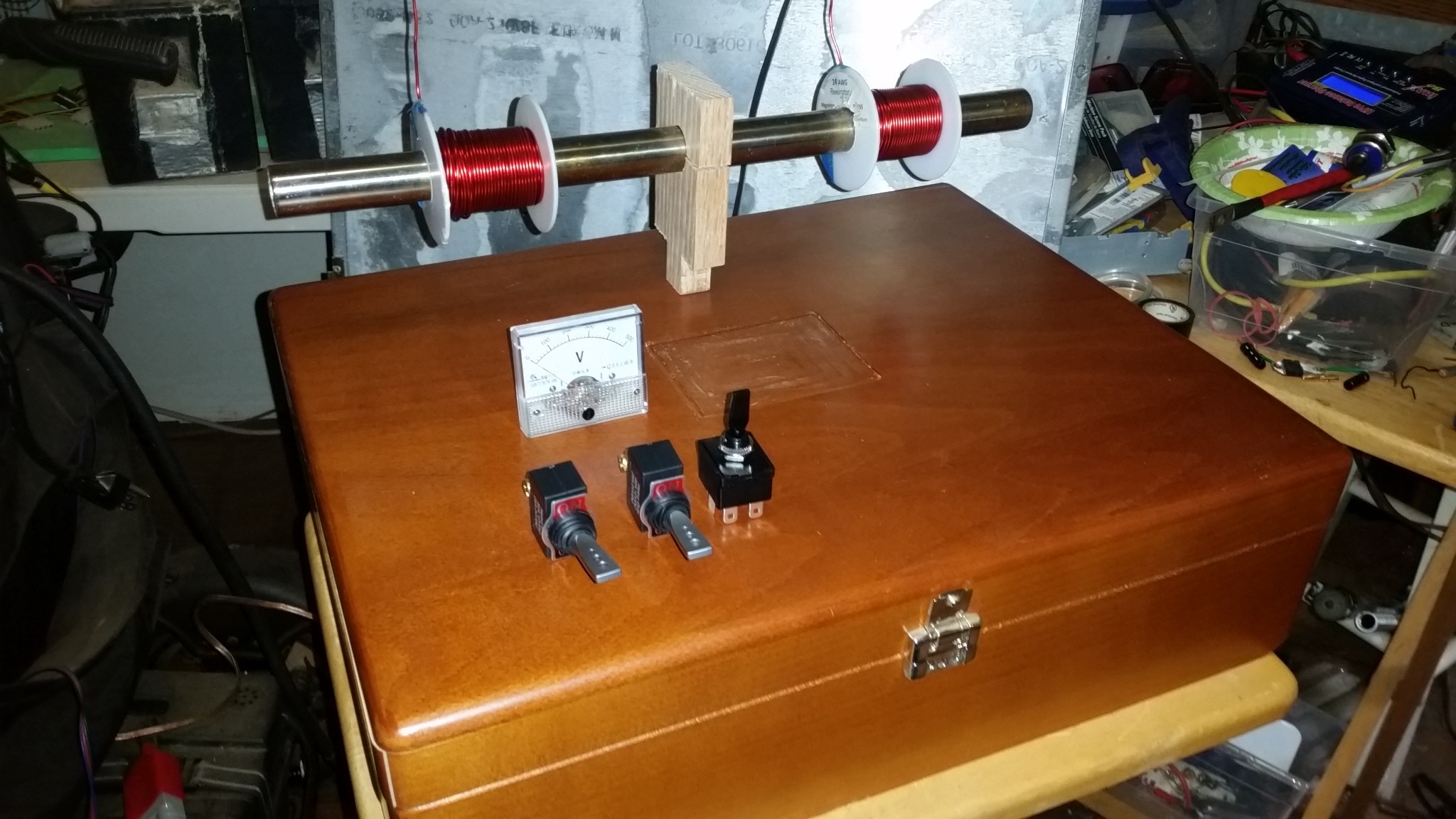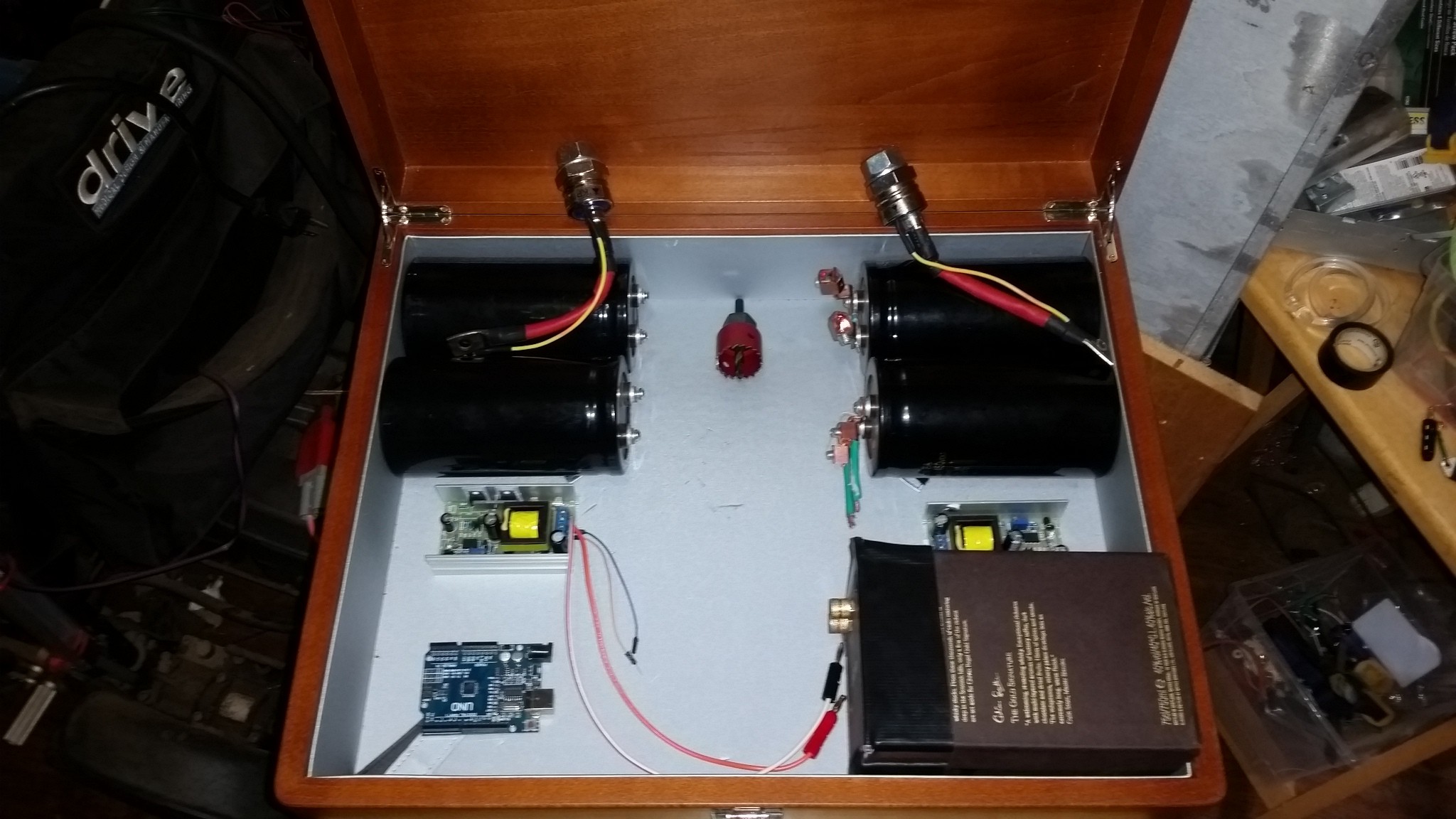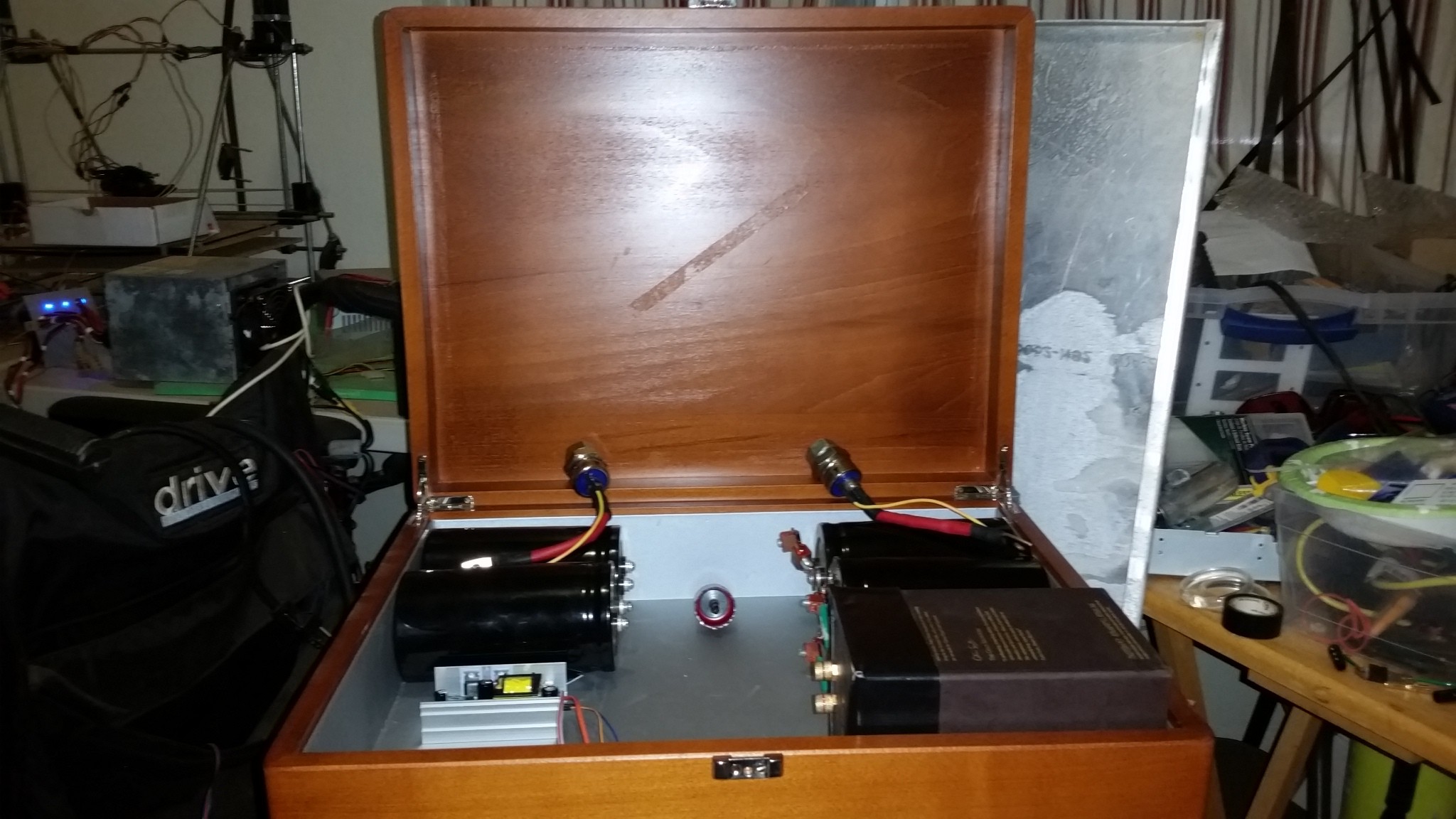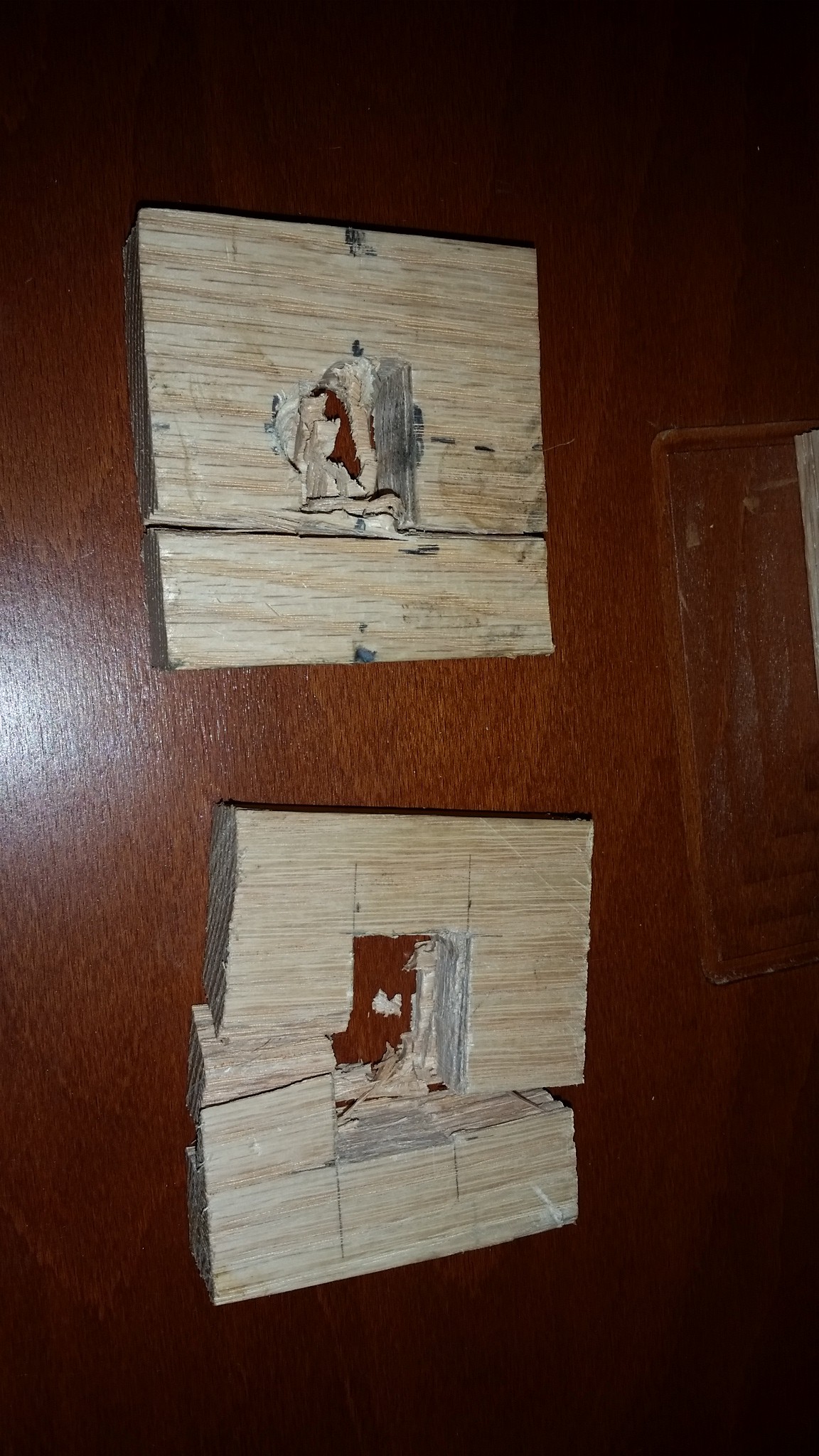Ok, so I have found this beautiful display case that was for a fancy scuba regulator. I think it will make a nice Project Box. But I have some difficulties setting up my design. Here take a look.

Notice the sizing of the switches and Voltmeter. I will use two wooden mounts like the one shown in the middle of the Tube.

Plenty of space to place 4 caps as 2 banks, two 450v charges, the 12v battery pack, and maybe even an Arduino Uno if it comes to that. I plan on using that drill bit to make holes to mount the SCRs through in the Lid.

Lots of real estate on the bottom side of the Lid. I will make two through holes for the mounting of the coils and tube. two more for the SCRs and then bunches of others to mount switches and maybe LEDs if I choose to use the Arduino.
Sadly I had planned on a nice fancy wooden square mortise/tenon joint to hold the tube mounts but after several failures at drilling and chiseling out the wooden blocks.

So, I have scrapped that idea and am going to glue it and then if needed make a pin to keep it in place.
I am now in dilemma. I have been experimenting with IR sensors and emitters and found, at least in the ones I have, that the voltage rides high (5v) and then drops to 3.2v-3.8v depending on the intensity of the IR LED shown on it. When testing with photo diodes it is a big change in resistance that is measured. My initial thought was to directly trigger the SCR via a transistor or relay without using a processor in the middle. But just don't see an easy enough ( or any) way to do it. Introducing an Arduino type processor increases, not only options but complexity in a significant fashion. I have nice little red lasers that are easy enough for me to work with and the photo diode goes from something like 30k to less than 1k from Dark to Light. This would be very easy to process on an arduino but I am not sure about delays. Does a physical relay work fast enough in this scenario or do I have to figure it out with transistors? Once I have added the UNO I could then start to add fun little LEDs or incorporate speed calculations in to it. This may be the necessity in the long run no matter what, but I feel like I might be rushing things. Then of course there is the question of how to isolate the electronics from all the feedback from the coils. I'm not usually some caught up in the aesthetics of a project but I love the idea of lots of switches, meters and LEDs. I think I'm just slowly talking myself into it...
Guess we will find out on the next post. Feel free to put your own two cents in.
 3dscuba
3dscuba
Discussions
Become a Hackaday.io Member
Create an account to leave a comment. Already have an account? Log In.